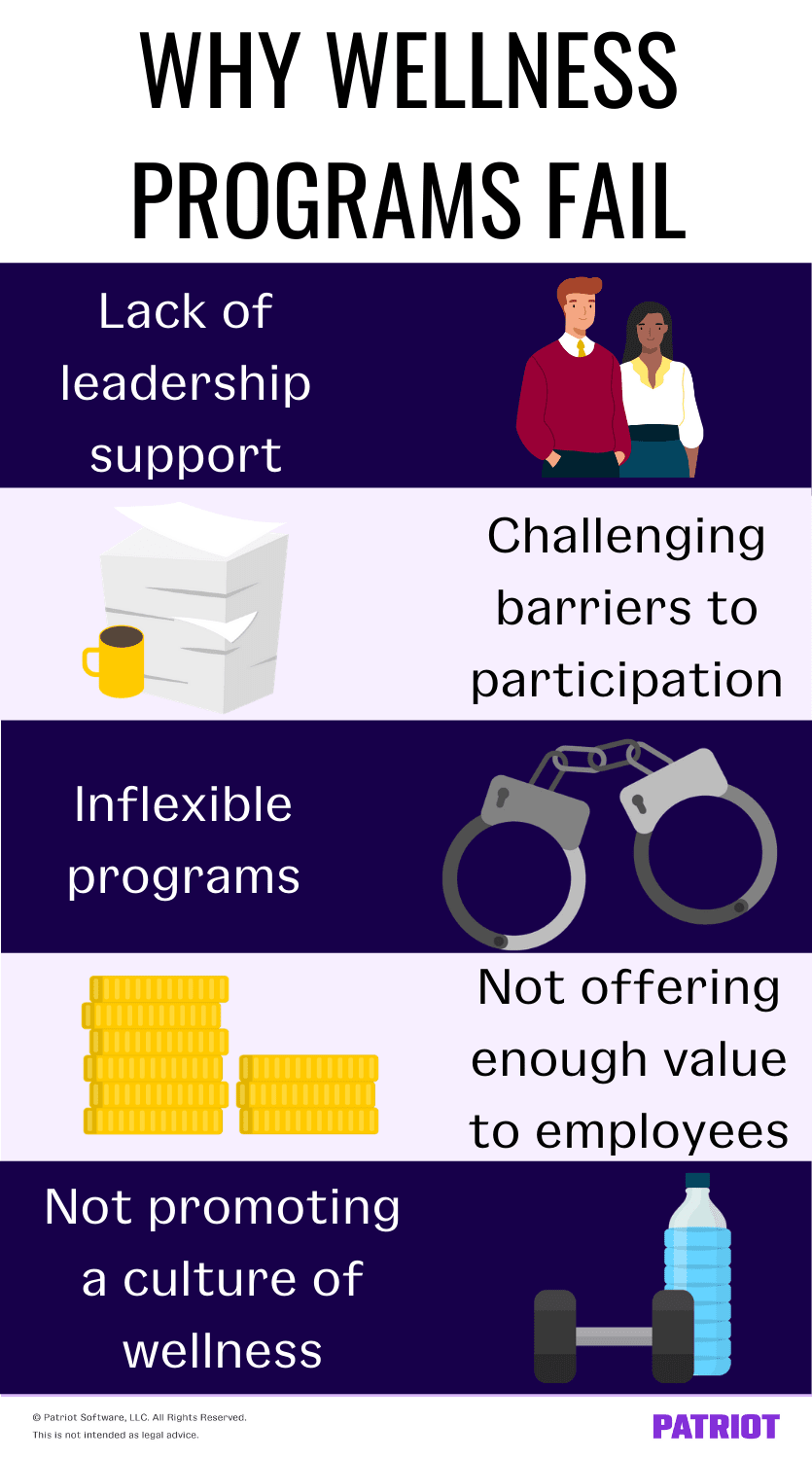In today’s hyper-competitive talent market, it’s increasingly difficult for employers to attract, engage, and retain employees. Based on a 2018 survey, one in two employees would like to experience a greater focus on well-being at their company, which includes physical, psychological, and financial wellness. With this, it is unsurprising that wellness programs at work and policies are becoming more popular in recent years.
However, not all corporate wellness initiatives become successful in achieving their goals and objectives, no matter how seemingly promising the potential results are for the organization.
Here, we look more closely at the five primary reasons why employees aren’t always receptive to these programs, eventually leading to their failure.

1. Lack of leadership support
For an employee wellness program to yield good results, there should be effective administration of the program, well-defined goals or objectives, and crystal clear communication that will engage and prompt action.
Behind every successful employee wellness program is a wellness committee that spearheads the initiative and increases participation among your staff.
At the same time, incorporate employees’ ideas or involve them in the planning and implementation to give them a sense of ownership. By keeping your wellness program employee-driven, you will find that the participants will be more intrinsically motivated.
In addition, there should be clear measurable goals so you can gauge the success of the program and track progress. And, have specific methods to improve the results accordingly.
Finally, to get staff to participate, promote the program through targeted communications.
2. Challenging barriers to participation
For a program to be successful, you need to get as many people involved as possible. The higher the engagement, the higher the value of the investment.
With this, you need to remove all the barriers or challenges that will prevent your employees from participating.
In other words, make the program easily accessible and convenient. Some of the ways to accomplish this include:
- Flexible hours and convenient locations
- An easy-to-comprehend and follow program
- Easy registration
- An easy-to-understand incentive plan
3. Inflexible programs
When it comes to corporate wellness, a “one-size-fits-all” approach just doesn’t work.
The differences in workplace, demographics, industry, and other factors make your employees’ needs unique. Take the time to delve deep into your workplace culture and know the things that matter to your employees. By doing so, you can design programs that are geared towards fulfilling these immediate needs and desires.
Further, instill a certain level of flexibility and diversity in the program if you want it to gain traction.
Don’t be too rigid in terms of the what, where, and when the program is provided, as this could overwhelm and dissuade your employees from engaging.
While it is not necessary to devise a perfect program that will meet each and every need of all your employees, offering a variety of options and some flexibility is enough to achieve maximum engagement.
4. Not offering enough value to your employees
In this fast-paced world, everyone is busy accomplishing their day-to-day duties. It can be difficult to get people to give their time, effort, and attention to something without making them realize how it can be valuable to them.
Employee wellness programs are more likely to become successful if people have a clear idea of what’s in it for them.
Communicate your wellness program’s goals to employees, such as:
- Better health
- Reduced stress
- New or stronger friendships
- Plain enjoyment
5. Not promoting a culture of wellness
When done right, cultivating a culture of wellness can pose significant long-term benefits to your organization. Such employee wellness programs are relatively low cost. And, the boost to staff’s morale and engagement, as well as increased retention, can bring massive value to your business.
Although there are limitless ways to promote wellness, the key here is to ensure that the initiative is well-designed and organized. And, keep the employees’ needs and welfare in mind above anything else.
By exploring the most common reasons for the failure of these programs, you should be able to get some guidance on how to better refine your strategy for optimum results.
These views are made solely by the author.
